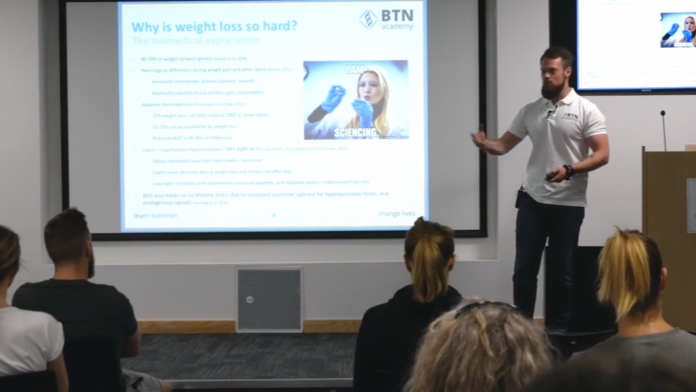
Insulin, Blood Sugar and its Role on our Energy
You may recall not that long ago that everyone was talking about insulin, or more precisely insulin resistance. Keto diets were the big thing with many people getting incredible results short-term, but finding it was not a very sustainable way to eat long-term.
More recently, our social feeds are becoming flooded with posts about how we should all be wearing glucose monitors, CGMs (known as Continuous Glucose Monitoring). But do we all need to be wearing these? At around £55 a month, they are not affordable for most people. Surely there’s an easier way to manage our diets?
Both the examples above are exactly what can happen when we make breakthroughs in research and that is they lead to extreme behaviour.
Let’s take the CGM as an example. Now, for someone living with Type 1 diabetes (where their pancreas cannot produce enough of the hormone insulin which controls blood glucose), wearing a monitor can be life-saving.
But what about those of us who do not have Type 1 diabetes? Why do we need this?
Insulin’s Role in our Body
Let’s take a step back and give a very brief overview of the role of insulin in the body.
When we eat foods containing carbohydrate, be it starchy, natural sugar or added sugar, the carbohydrate gets broken down to its simplest form, glucose. This glucose is absorbed into the blood stream and becomes blood glucose. At this point, our pancreas detects the rise in glucose and releases insulin (from the beta cells). Insulin then acts like a key, moving around the cells of the body (including the brain), unlocking them and allowing this glucose to enter the cells and fuel us. It’s incredibly clever. But sometimes we have too much sugar in our bloodstream and not enough in our cells. This starts to build up and before we know it, we are diagnosed with Type 2 Diabetes.
So why has this happened? Well, in the majority of cases, the shape of our cell has changed usually due to weight gain. A layer of fat can be blocking the entrance of the cell, thereby preventing the key (insulin) from unlocking effectively. So as the glucose can’t get to the cells, it prevents us from absorbing all the energy from our food. As a result, we usually start to feel fatigue which is a key sign that blood sugars are too high. And whilst we’re talking about side-effects, increased thirst is pretty common too. The body detects excess sugar in the bloodstream and tells us to drink more to try and disperse it.
Other things that can start to increase glucose in the bloodstream are smoking (nicotine increases blood sugar levels making them harder to handle), certain medications (like a course of steroids) and sudden shock to the body. But for the majority of us, we can manage to maintain healthy blood sugars by applying simple lifestyle choices.
Our Body Fat Level
Managing weight would usually be the best place to start your conversation if you’re approached by someone who wants help managing their blood sugar levels. If someone is above a healthy weight, for every kilogram (or 2.2lbs) of weight that they can lose, they’ll reduce their risk of developing Type 2 diabetes by 16%. So, encouraging someone to start with a 5% reduction in body weight can be incredibly motivating as well as relatively achievable.

While we’re looking at weight loss, it’s worth stating that those who hold their weight around the abdomen, are more likely to develop Type 2 diabetes. Studies suggest that abdominal fat causes cells to release pro-inflammatory chemicals which make the body less sensitive to the insulin it produces by disrupting the function of insulin responsive cells and their ability to respond to insulin.
But obesity in general still has a very firm link with type 2 diabetes as it’s believed to trigger changes to the body’s metabolism. These changes cause adipose tissue to release fat molecules into the blood which can also affect insulin responsive cells and lead to reduced insulin sensitivity.
So, when it comes to managing blood sugars, the best thing we can do is maintain a healthy weight. And it’s certainly important at this stage to recognise the importance that exercise can play in managing blood glucose levels.
Exercise and it’s Role in Blood Sugar Management
When we move, we draw on our reserved carbs (glycogen) requiring the body to rebuild these stores. This requires using the sugar in your blood. So, any kind of movement is good but resistance training is particularly important. By increasing muscle mass, that muscle has a higher capacity to store blood glucose (as glycogen).
What about carbohydrate? Should we go back to the Keto diet and eliminate carbs from our diet? In brief, no. Removing a food group from the diet is never a good idea, but looking at the quality of the carbs we eat would be a good place to start.
Starchy carbs are the slowest of the carbohydrate group reach the blood stream. By encouraging clients to opt for wholegrains, they’d be doing themselves a huge favour. By having to do some work and break down the fibre, the release is slowed down. Speaking to clients about portion sizes can also make a huge difference. So, by only having a quarter to a third of starchy carbs on a plate, with the remainder being protein and veg, you’re still recommending a balanced diet but with less carbohydrate for the body to deal with. The book or app, Carbs and Cals can be very eye opening for someone to visually be aware of the effect of certain foods and the portion size can have on their blood sugar levels.
Examples of wholegrain starchy foods would be wholegrain or brown rice (as opposed to white), wholewheat pasta, wholemeal bread (seeded even better), oats or fibre-based cereals and potatoes with skins on.
What about Natural Sugars?
When it comes to natural sugars, we are talking about honey, milk, fruit and fruit juice. Now, even though we cannot slow down the high speed these foods enter the bloodstream, we need to be sensible and consider the other nutrients in these foods that play a huge role in optimal health. So, discouraging fruit would not be wise, but sticking to 3 portions a day would be good advice. There are more nutrients in fruit before it is juiced, so keeping fruit juice and smoothies to a minimum would also be sound advice, or opt for smoothies where the fruit is blended whole so it still contains its fibre is a good move.

Milk and yoghurt are essential for calcium and a whole host of other vitamins and minerals so moderation is sensible. Keeping yoghurt to plain or natural rather than the added sugars of flavoured will also help not push blood sugars too high.
And when it comes to foods containing added sugars, like cakes, biscuits, sweets, chocolates and ice cream, to name but a few, common sense should prevail. Keeping these to a minimum should be recommended. They have a tonne of added sugar, and are generally very high in calories, so make weight maintenance hard, and weight loss even harder.
This leads us just to remind you that eating regularly is also advised. If someone has very little food during the day and then has a huge dinner followed by evening snacking, the pancreas is put under immense pressure in a short space of time, as is the digestive system.
Finally, we mustn’t forget alcohol. Spirits are carb-free (but the mixers may not be!) but wine, beer and cider are packed. So, a big night on the beer followed by a takeaway (which usually comes with huge portions of white rice / pasta or chips) is going to give your body a lot of work to do all of a sudden.
Other sensible ways to help people manage healthy blood sugar levels without having to stick a contraption on their arm include practicing good sleep hygiene and managing stress levels.
Recent research is focussing on the relationship between disrupted / insufficient sleep and the increased risk of developing type 2 diabetes. And it’ll come as no surprise that a lack of good sleep leads to the inevitable poor food choices the following day.
Stress management is also key to managing glucose levels. Whilst stress alone doesn’t cause diabetes, there is some evidence that there is most certainly a link between stress and diabetes. A high level of cortisol is possibly stopping the beta cells in the pancreas (which release the insulin) from working properly, thereby reducing the amount of insulin made.
So, rather than just looking at the effects that foods will have on your blood glucose levels (which is all a CGM device will do), sorting your lifestyle is what is needed to keep these levels stable. After all, the CGM is not medicine, the results it gives will still need to be addressed.
So rather than start investing in monitors, advising a balanced diet with regular meals, regular exercise (which includes resistance training as well as cardiovascular), keeping alcohol to a sensible level, not smoking, getting a good sleep and managing stress are your best ways to keep your sugar levels in a healthy range.
And if you want to learn about how to advise yourself or others with nutrition, our AfN Approved Nutrition Coaching Course – Foundation Programme is the perfect starting point – where you’ll learn all about calories, macronutrients, fibre, micronutrients and more. Check out the course HERE.
References
diabetes.org.uk
cavuhb.nhs.wales (pocket medic)